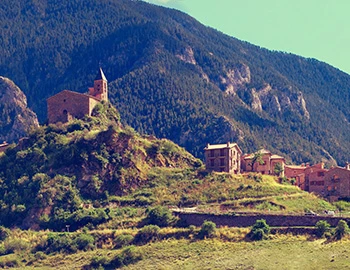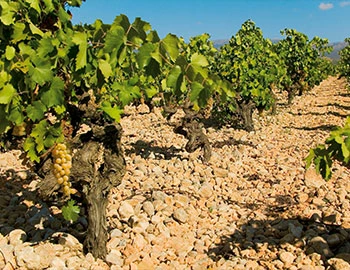Trosset de l'Adolf 2004
Finques de Cims, DOC Priorat, Cims de Porrera, 750 ml

Description
The Trosset de l'Adolf is made entirely from very old "Carinyena" vines planted in 1930 at 450 metres above sea level. As soon as it is poured, the wine reveals a very intense aroma of spicy and fruity aromas, reminiscent of a summer walk in the woods: scents of wild berries, moss, mint, noble mushrooms, humid stones, a hint of game and peppermill. These are accompanied by cooked fruit aromas of plums, dried dates, dry garrique herbs and tea roses. The aroma and flavour palate is very complex and continues to unfold with aeration. On the palate, l'Adolf is characterised by its spiciness and warming juiciness. It is velvety and its aromas are reminiscent of noble cedar wood, Mediterranean herbs, balsamic notes and ripe black fruits. We recommend decanting the wine about 1 hour before drinking.
Best wine trader for matured wines 2024

Baur au Lac Vins was honoured by Falstaff as the best wine merchant for mature wines. Thank you very much for the award!
Attributes
| Origin: | Spain / Catalunya / Priorato |
| Grape variety: | Carignan |
| Label: | Vegan |
| Ripening potential: | 15 to 25 years |
| Drinking temperature: | 16 to 18 °C |
| Food Pairing: | Saddle of lamb fillet with herb jus, Bistecca fiorentina, T-Bone steak, Wild fowl, Châteaubriand, Filet Wellington, Roast saddle of venison |
| Vinification: | fully destemmed, Punching down, soft pressing |
| Harvest: | hand-picking, in small boxes |
| Maturation: | in new barriques, long cultivation |
| Maturation duration: | 18 months |
| Volume: | 14.5 % |
| Note: | Contains sulphites |
Carignan
Fervid oddball
The red Carignan is a heat-loving Mediterranean grape. It has a bit of everything over other varieties: more colour, more tannins, more acid. It is not easy to press a harmonious wine from it alone. Hence it is most often encountered as a blend partner, as in the Côtes du Rhône wines. In Spain it is called Mazuelo and is part of the traditional Rioja recipe. It provides the wines’ acidic backbone. The most exciting varietal specimens come from the slate slopes of the Catalan Priorat (named here Cariñena), from old bush vines in Chile or from Sardinia, where it is known as Carignano. When pressed properly, this oddball generates a lush bouquet of plums and dark fruits. Its origins lie in the northwest Spanish Aragon, near the town of Cariñena. The surrounding wine area is also named after it. In order to prevent confusion with the vine, it is called Samsó there.

Priorato
Priorat: Vergessen, wiederentdeckt, gefeiert…
Noch anfangs der 80er Jahre war das Priorat eine durch die Abwanderung geschwächte Problemregion. Dann entdeckten vier junge Winzer den verlassenen Talkessel, der nur eine Autostunde von der katalonischen Mittelmeerküste entfernt liegt, und begannen mit der Restauration der alten Rebanlagen. Heute sind die Priorat-Weine, die meistens von den alteingesessenen Sorten Garnacha und Cariñena geprägt werden, weltweit gefragt. Dank der spektakulären Renaissance der Priorat-Weine erlebt die ganze Region einen Aufschwung.

Catalunya
Catalonia: the great range
Spain’s second largest wine region has an impressive variety to offer. As a result, there are eleven different designations of origin in Catalonia. As the home of cava, Catalonia is one of the leading producers of sparkling wines produced according to classical methods. There is a wide selection of both elegant white wines and well-structured reds. Areas such as Priorat or Montsant have experienced an enormous upswing in recent years. The traditional sweet wine Moscatel de Sitges is also produced here.

Spain
Spain – Variety and perfection
“Somewhere in la Mancha, in a place whose name I do not care to remember...,” begins Don Quixote's odyssey.
The most famous part is definitely when Don Quixote thinks windmills are his enemy and wants to fight them – until they nearly kill him. It’s possible there was a bit too much of the La Mancha wine at play. Spanish vines fight for their survival in rugged landscapes, battling fierce drought and rough soils. But they fight well.



